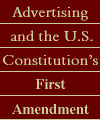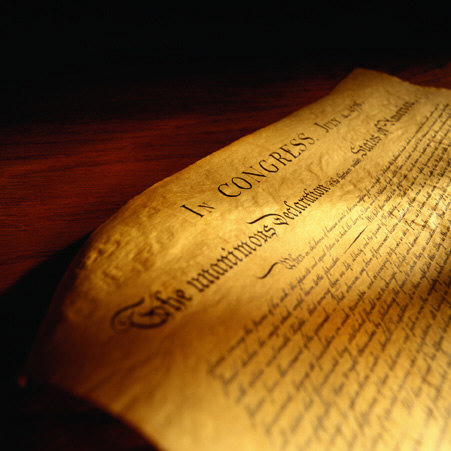
Hidden Side Menu Slides Out: Place Cursor On It!

 BROADCAST OF INFORMATION BY MEANS OF "SUBLIMINAL PERCEPTION" TECHNIQUES
BROADCAST OF INFORMATION BY MEANS OF "SUBLIMINAL PERCEPTION" TECHNIQUESThis page contains the full-text reproduction of Federal Communications Commission Document, FCC 74-78, "BROADCAST OF INFORMATION BY MEANS OF `SUBLIMINAL PERCEPTION' TECHNIQUES," issued January 24, 1974.
| This page contains the full-text reproduction of the Federal Communications Commission Document, FCC 74-78, "BROADCAST OF INFORMATION BY MEANS OF `SUBLIMINAL PERCEPTION' TECHNIQUES," issued January 24, 1974. |
PUBLIC NOTICE Federal Communications Commission 1919 M Street, NW. Washington, D.C. 20554 For recorded listing of releases and texts call 632-0002 For general information call 632-7260 FCC 74-78 08055 January 24, 1974 - B
BROADCAST OF INFORMATION BY MEANS OF
"SUBLIMINAL PERCEPTION" TECHNIQUES
Shortly before Christmas 1971 the Commission received a few complaints that some television stations had broadcast an advertisement which contained a statement of such short duration that most viewers were unaware of it -- at least, consciously unaware of it. The message broadcast in this matter was "Get It," referring to the product advertised in the commercial. Since this statement could not be consciously perceived by most persons, it involved the use of the "subliminal perception" technique which was the subject of Commission inquiry years ago.
In a Public Notice dated November 27, 1957, the Commission noted that the Television Code Board of the NAB (then the NARTB) had asked its subscribers to refer any proposals for television use of subliminal perception to the Board. In that Notice, the Commission stated in part:
Deep concern has been expressed by members of the public, the broadcast industry and leaders in public life with respect to the use of "subliminal perception" advertising by television stations. That this concern has a firm basis is evidenced by the action of the NARTB and the caution with which television licensees have approached the technique. Obviously, it is a matter which vitally concerns the public interest. Accordingly, the Commission's study is being directed toward determining what appropriate steps, if any, should be taken by the Commission with respect to the possible use of the above technique by the television licensees. The posture of the problem is such that the public interest is not in immediate danger of being adversely affected. Ample proof has been given of the recognition by television licensees of their responsibilities and obligation to operate their stations in the public interest.
At that time the Commission had no information that any television station had made use of subliminal perception techniques, except on an experimental basis and for scientific purposes, and after 1957 no instance of telecasting of such messages came to the attentions of the Commission until the 1973 pre-Christmas advertising campaign, in which an advertising agency distributed spots involving the "Get It" statement.
Commission inquiry revealed that the NAB TV Code Authority had learned of the use of the subliminal messages in late November and had received a statement from the advertising agency that it was dispatching telegrams to all stations to which the advertisements had been sent, informing them of the subliminal statements, authorizing the stations to delete the statements from the spots and informing that stations that film prints which did not contain the "Get It" flashes would be sent to them. (The Television Code now prohibits the use of "Any technique whereby an attempt is made to convey information to the viewer by transmitting messages below the threshold of normal awareness...")
Despite the Code Authority's action, some stations apparently continued to broadcast spots containing the "Get It" statement, and some state they have no record of having received the telegram from the agency.
We believe that the use of subliminal perception is inconsistent with the obligations of a licensee, and therefore we take this occasion to make clear that broadcasts employing such techniques are contrary to the public interest. Whether effective or not, such broadcasts clearly are intended to be deceptive.
In closing, we note that the Federal Trade Commission also received a complaint about the pre-Christmas announcements, and that it is making inquiry in the matter in light of the laws that it administers.
Action by the Commission January 23, 1974. Commissioners Burch [Chairman], Lee, Reid, Wiley and Hooks.
[END]
The following section includes the full-text, or excerpted portions, of articles on Advertising and the First Amendment which originally appeared in Advertising Compliance Service:
Article #1: 1ST Amendment Violated by Refual to Display on Buses Ad with Nickname of NYC Mayor: 2d Circuit.
Article #2: Commercial Ad Defined.
Article #3: Nader Parody Case.
Article #4: 1st Amendment and Hyperlinks, Mouseover Text and Metatags.
Article #5: Commercial Speech Case.
Expanding Folders Menu: Click Topic to Expand!- Advertising Law Topics
- Advertising Law Newsletter
- Advertising Law & Tobacco
- Advertising Law & Consumers: Information
- Advertising Law & Consumers: Resources
- Advertising Law News Briefs
- Advertising On the Web

© Copyright 1999-2017 JLCom Publishing Co., L.L.C. All rights reserved.